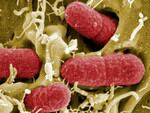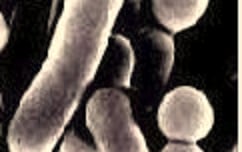The agency evaluated methods under development and ideas for the future based on availability, uses, strengths, and limitations from the perspective of the laboratorians and epidemiologists.
It works with USDA Agriculture Research Service (ARS), Centers for Disease Control and Prevention (CDC) and Food and Drug Administration (FDA) to develop subtyping and detection assays.
FSIS uses Pulsed-field Gel Electrophoresis (PFGE) and Multi-Locus Variable Number of Tandem Repeat (VNTR) Analysis (MLVA) to identify outbreaks, trace the contamination and investigate potential harbouring sites.
PFGE subtyping was used for Listeria monocytogenes (Lm), Salmonella, STEC, and Campylobacter isolates last year. MLVA methods for E. coli O157:H7 and Salmonella serotypes supplement PFGE.
One to four years
USDA-FSIS explored subtyping methods for Campylobacter, non-O157 STEC, Lm, and Salmonella spp with possible implementation in the next one to four years in the white paper.
These include MLVA assays under development or being validated for use with additional bacterial groups.

“A MLVA protocol for Lm is currently undergoing internal validation at CDC’s Enteric Diseases Laboratory Branch, and CDC developed a MLVA protocol for S. Newport, which has been internally validated and is undergoing external validation,” according to the paper.
CDC has evaluated MLVA assays for S. Heidelberg and S. Montevideo following foodborne investigations involving FSIS-regulated products but the assays have only been used under an experimental basis and are not validated for use by PulseNet labs.
The CDC is looking at whole genome sequence comparison for outbreak surveillance/detection in place of MLVA techniques for foodborne pathogens.
Single nucleotide polymorphism (SNP) based methods, such as targeted multilocus genotyping (TMLGT), may be employed to improve risk-based sampling algorithms, said FSIS.
Five or more years
The agency said it was aware of other methods such as high-throughput sequencing, which it was not yet evaluating, which may take five or more years to implement.

Whole Genome Sequencing (WGS) will detect greater detail about strains than other subtyping methods, and will distinguish strains, otherwise indistinguishable by PFGE, MLVA, SNP and other methods.
WGS data would be more expensive to collect, require more computer database storage, produce replicate datasets that are identical in all but a small number of sequence differences and the per-genome cost could make it prohibitive for surveillance samples.
“Like any other assay, the proper balance between sensitivity and specificity (i.e., to correctly detect and act to limit the spread of true outbreaks) will need to be determined from practical observation and experience,” said the paper.
PFGE - chosen method
PFGE is considered the best method available for public health laboratories to detect and track outbreaks and MLVA helps to differentiate subtypes during outbreak investigations.
PFGE and MLVA data must be used with epidemiological evidence, environmental assessments, trace-back activities, and other information from outbreak investigations.
Mass spectrometry which can distinguish molecular fragments and estimate nucleic acid sequence, and Raman spectroscopy, based on scattering of monochromatic light (e.g., a laser) when it encounters cellular biomass (carbohydrates, fatty acids, and proteins), are used to identify and subtype bacteria.
OSEL and other PulseNet labs use BioNumerics software to create dendrograms from subtype data.
For PFGE data, the Unweighted Pair Group Method with Arithmetic Mean (UPGMA) method is used to create a similarity matrix from the fragment size data.
The 100K Pathogen Genome Project will make 100,000 whole genome sequences for pathogens, including Campylobacter, Lm, Salmonella and STEC, available through a publically-accessible database at the National Center for Biotechnology Information (NCBI).
